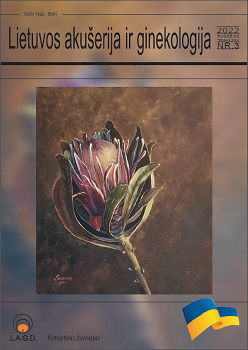POLYCYSTIC OVARY SYNDROME AND SKIN CHANGES: INCIDENCE, PATHOGENESIS, CLINIC AND TREATMENT. LITERATURE REVIEW
Abstract
The aim. To review skin changes in patients with polycystic ovary syndrome. Methods. A comprehensive review of 27 literature sources published between 2003 and 2021 on skin changes in patients with polycystic ovary syndrome was performed. Results. The incidence of dermatological symptoms in polycystic ovary syndrome can reach up to 90 %. Skin changes in patients with polycystic ovary syndrome are due to hyperandrogenemia and insulin resistance. The frequency of these conditions varies, with hirsutism and acne being the most common skin changes. Other dermatological features associated with polycystic ovary syndrome include hyperseborrhoea, female pattern hair thinning, acanthosis nigricans, striae and soft fibromas. Conclusions. Polycystic ovary syndrome is a common disorder affecting 6–10 % of women of reproductive age. Detection of skin changes in polycystic ovary syndrome may help to diagnose polycystic ovary syndrome early and prevent its long-term consequences on women’s health.

